Folk Music & Dance of Kerala: A Journey Through Tradition
Kerala, often called God’s Own Country, is not only famous for its serene backwaters, lush greenery, and Ayurvedic wellness, but also for its vibrant culture expressed through folk music and dance. These art forms are more than entertainment; they are deeply rooted in spirituality, history, and the everyday lives of the people. A journey into Kerala’s cultural landscape is incomplete without experiencing its traditional performances, each narrating tales of devotion, valor, and celebration.
In this blog, we take you through the fascinating world of folk music and dance of Kerala, showcasing how these traditions have stood the test of time and continue to enchant audiences worldwide.
Kathakali – The Classical Theatre of Kerala
One of the most iconic art forms of Kerala, Kathakali combines dance, drama, music, and elaborate costumes. Originating in the 17th century, this dance-drama depicts stories from the Mahabharata, Ramayana, and other Hindu epics.
Performers wear vibrant face paints, intricate headgear, and ornate costumes that take hours to prepare. The movements are exaggerated, accompanied by powerful percussion beats of the chenda and expressive facial gestures (mudras), which convey the story even without spoken words.
For travelers, witnessing a live Kathakali performance in Kochi, Thrissur, or a village temple festival is an unforgettable cultural experience.
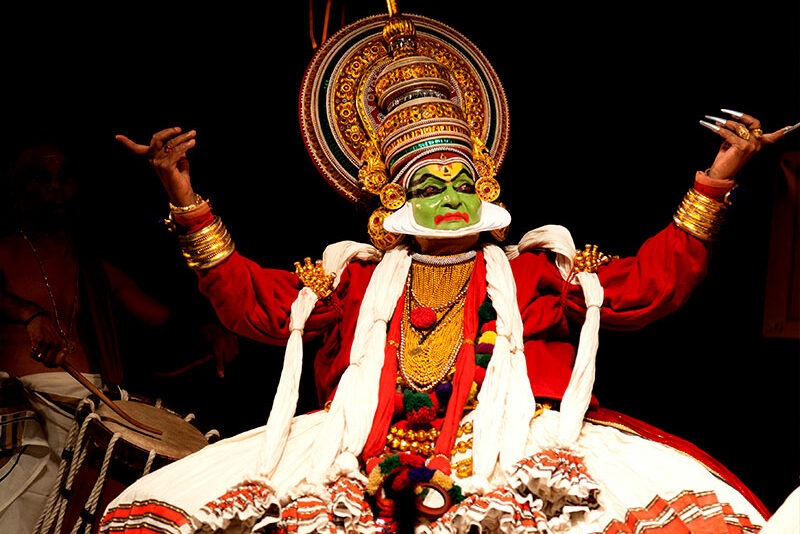
Mohiniyattam – The Dance of the Enchantress
Known as the “dance of the enchantress,” Mohiniyattam is Kerala’s graceful classical dance form performed primarily by women. The movements are soft, fluid, and mesmerizing, often performed to the melodious tunes of Carnatic music.
The white and gold traditional attire and the swaying steps make it one of the most elegant expressions of Kerala’s culture. Mohiniyattam performances usually narrate stories of love, devotion, and divine feminine energy.
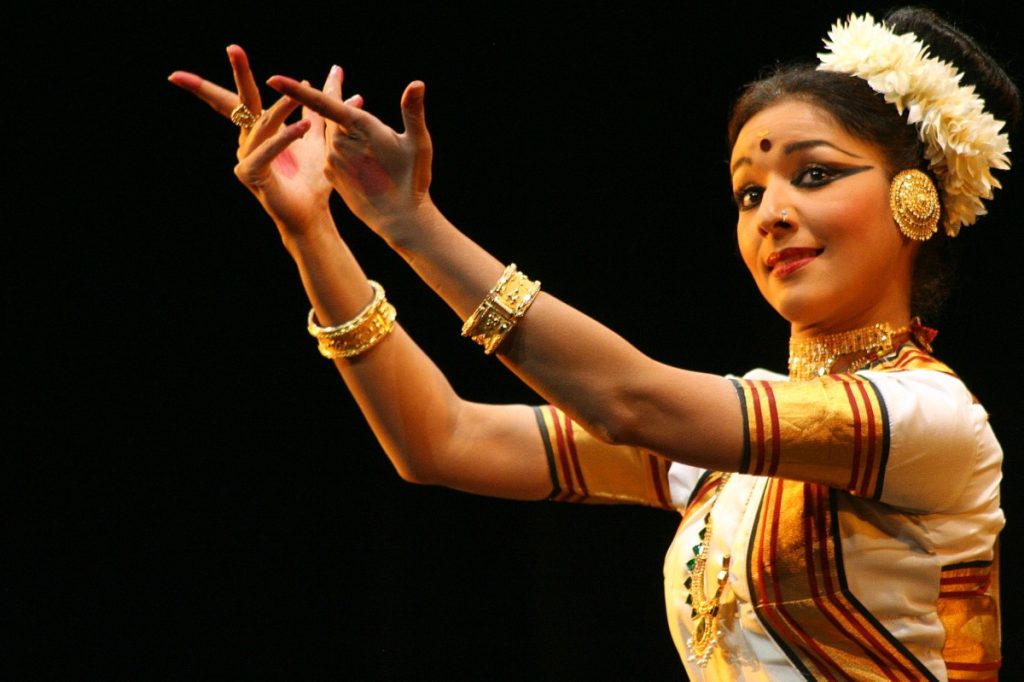
Theyyam – Dance of the Divine
In Northern Kerala, Theyyam is not just a performance but a spiritual ritual where performers embody deities, ancestors, or spirits. With elaborate face paintings, towering headdresses, and fiery dances, Theyyam is performed in temple courtyards and village shrines.
The rhythmic chants, pounding drums, and dramatic movements transform the atmosphere into one of divine energy. Theyyam is a must-see for anyone interested in Kerala’s mystical traditions, especially in Kannur and Kasaragod.
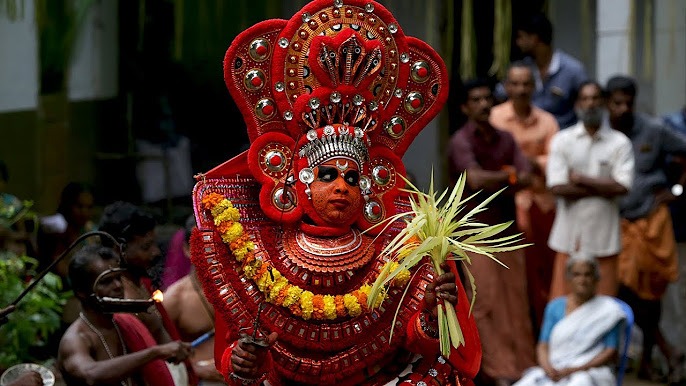
Panchavadyam – The Orchestra of Five Instruments
No festival in Kerala is complete without the thunderous sounds of Panchavadyam, a traditional temple orchestra consisting of five instruments: maddalam, thimila, ilathalam, idakka, and kombu.
This vibrant musical ensemble builds from a slow rhythm to a fast-paced crescendo, electrifying the crowd during temple festivals such as Thrissur Pooram. The synchrony between hundreds of artists playing together is a cultural spectacle unlike any other.
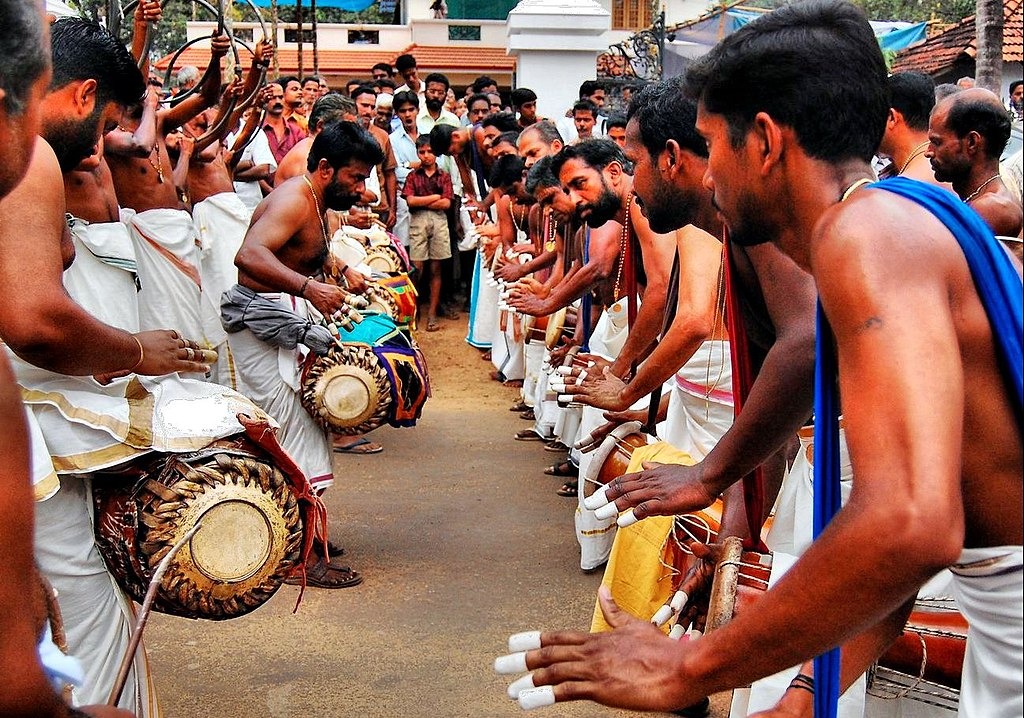
Chenda Melam – The Heartbeat of Kerala
The chenda, a cylindrical percussion instrument, dominates Kerala’s folk music. In Chenda Melam, groups of musicians create powerful beats that echo through temple grounds during festivals.
This form of music is deeply associated with temple rituals and is often played to accompany Kathakali, Koodiyattam, and other classical performances. For tourists, the energy of a Chenda Melam is an unforgettable sound of Kerala’s soul.
Oppana – A Celebration of Community
Oppana is a popular dance form of Kerala’s Muslim community, performed during weddings and festive gatherings. Women form a circle around the bride and sing traditional Mappilapattu (folk songs) while clapping rhythmically and dancing gracefully.
Oppana reflects the joy of togetherness and is a beautiful example of Kerala’s cultural diversity, where Hindu, Muslim, and Christian traditions coexist harmoniously.
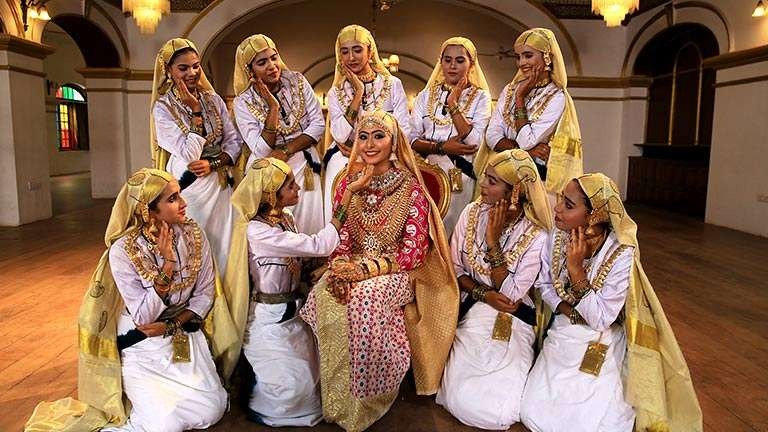
Thiruvathirakali – Women’s Dance of Devotion
Performed during the festival of Thiruvathira, this dance is an expression of devotion and womanhood. Women, dressed in traditional white saris with golden borders, form circles around a lamp and dance rhythmically to devotional songs.
It is believed that this dance originated as a way for women to express prayers for marital happiness and prosperity. Today, it is a cultural highlight during Kerala’s festivals.
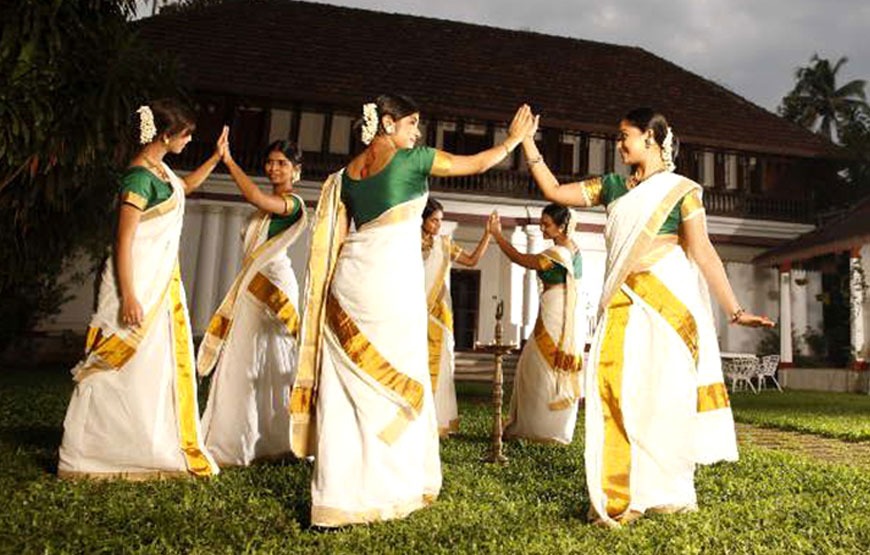
Margamkali – The Christian Folk Dance of Kerala
Kerala’s cultural fabric is woven with threads from multiple faiths. Margamkali, a Christian folk dance, is performed around a traditional lamp by men dressed in white dhotis. The dance narrates the story of St. Thomas, the apostle who brought Christianity to Kerala.
This art form is an example of how Kerala’s traditions embrace different religions while preserving their unique identity.
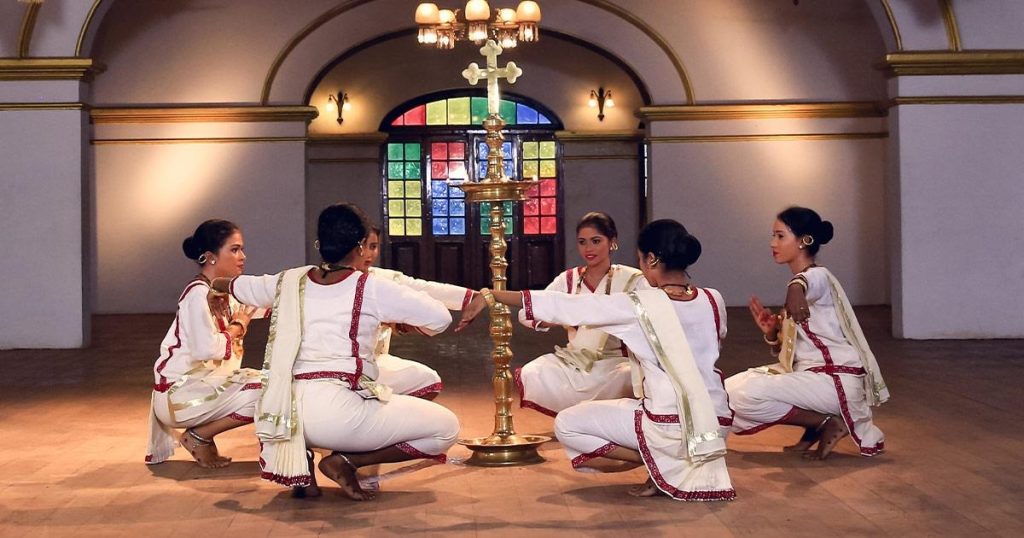
Sopana Sangeetham – Temple Music Tradition
Sopana Sangeetham is the traditional temple music of Kerala, usually sung on the temple steps (sopanam) leading to the sanctum sanctorum. With a slow, meditative style accompanied by the edakka drum, this form of music creates a serene spiritual atmosphere.
It is considered the purest form of devotional expression in Kerala’s temples, and listening to it is a soothing cultural experience.
Why You Should Experience Kerala’s Folk Arts
Kerala’s folk music and dance are not merely performances – they are living traditions that reflect its history, spirituality, and community spirit. Whether you are attending a grand temple festival in Thrissur, watching a Kathakali show in Kochi, or witnessing a Theyyam ritual in Kannur, you are immersing yourself in centuries of cultural evolution.
For travelers from across India, especially the capital, planning a trip with a Kerala tour package from Delhi makes it easier to explore these cultural gems along with Kerala’s natural beauty. Such packages often include festival experiences, Kathakali shows, and visits to cultural centers, ensuring you don’t miss the heartbeat of Kerala’s heritage.
Final Thoughts
Kerala’s folk music and dance traditions are windows into the soul of the state. From the divine rituals of Theyyam to the elegance of Mohiniyattam, from the thunder of Chenda Melam to the grace of Thiruvathirakali, each performance carries the rhythm of Kerala’s heart.
If you want your journey through Kerala to be more than sightseeing, immerse yourself in these art forms. They will not only entertain you but also connect you to the timeless traditions that make Kerala truly unique.
